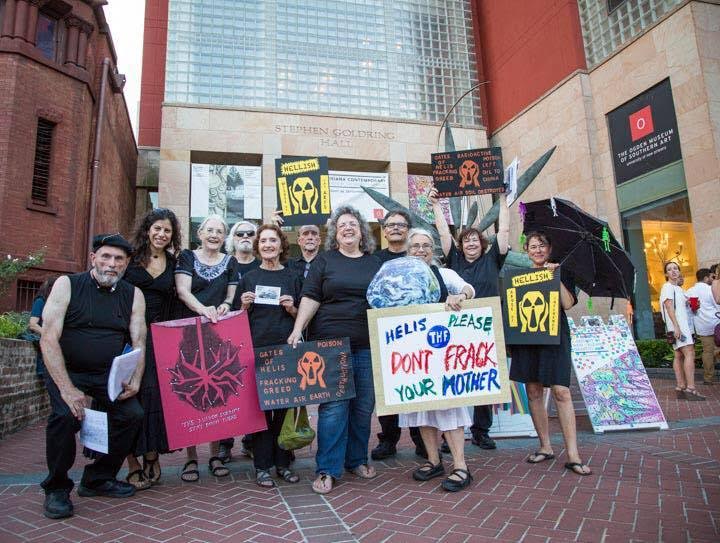The parish of St. Tammany, a wealthy area of New Orleans with some of the best rated public education but also the most politically conservative area of the city, has utilized the power of the grassroots movement to finally put an end to a 2 ½ year battle between the citizens of St. Tammany and the Helis Gas and Oil Company, which is privately owned based in New Orleans.
On September 20, the fossil fuel company publicly raised its white flag, citing that the area in which they proposed to frack was not geologically sound and also that Helis lacked the proper commercial viability to do so. Riding on the coattails of its success in oil drilling, the company decided to switch to fracking. Helis estimated the project’s potential for commercial success at up to 35 percent. The residents of the area, just north of the nearby city of Mandeville, took action in 2014 when the project was first proposed, via a rally and mass bike ride between the towns of Covington and Abita Springs and back again.
“Potentially that means supporting a drilling ban, but at least it means slowing down and making sure that permits that are being applied for right now are looked at under scrutiny by the residents," said Andy Zellinger of the Sierra Club.
Greg Beuerman, Helis spokesman, commented, “[We have] determined that the prospect lacks appropriate commercial viability so the company will not pursue the project any further. Helis intends to permanently abandon the well and secure the site in accordance with regulatory requirements and its leases.”
A lawsuit was filed by Concerned Citizens of St. Tammany against Helis Oil and Gas to stop fracking under the zoning laws. The company wants to drill north of Interstate 12 and east of Highway 1088 between Mandeville and Abita Springs.
"We're very strongly against this. We're doing everything we can to stop this and I believe the parish is beginning to understand the will of the people. They don't want this," said Abita Springs Mayor Greg Lemons.
When the fracking project was first proposed, most of St. Tammany had no idea what the word fracking meant, let alone its deleterious environmental and public health effects or its mention by certain presidential candidates.
The town quickly found out Helis’ intent when their first proposed drill site was a mile and a half away from Lakeshore High School. Although the area was zoned for residential use, that made not an iota of difference to the Louisiana Department of Natural Resources, who wasted no time in granting Helis the permission to conduct experimental drilling in the approved zone.
The company has suspended the air, water quality and noise monitoring that it instituted before beginning work on the residentially zoned site. The results of that monitoring will still be made public via the Louisiana Office of Conservation.
This means victory for the St. Tammany parish and a $20 million dollar loss in profits for Helis. Grassroots power and public pressure work their magic.
“While we are disappointed the well was unsuccessful, exploratory projects such as this one involve a substantial risk of failure which we accept as part of our business,” said Helis President David Kerstein. “We can terminate this project knowing that we conducted our operations without a single complaint regarding noise, traffic or environmental impacts.”
Parish President Pat Brister thanked Helis, in a statement Tuesday, for “being a responsible corporate citizen during exploratory drilling, and throughout the entire permitting process.”
